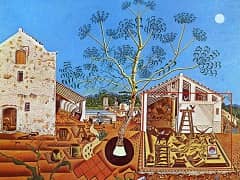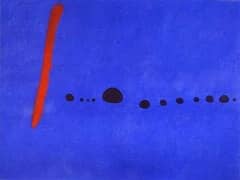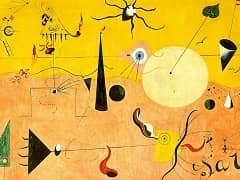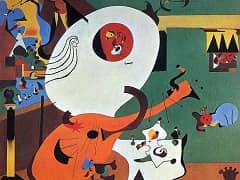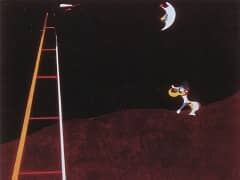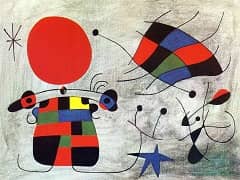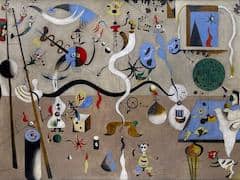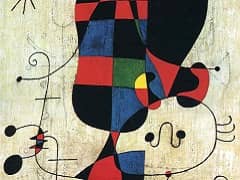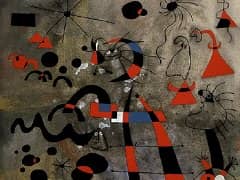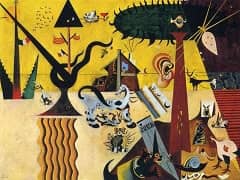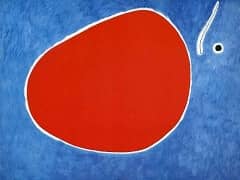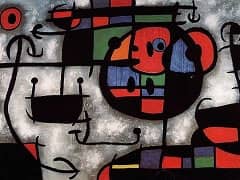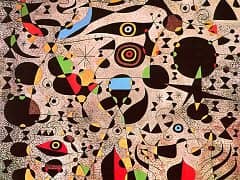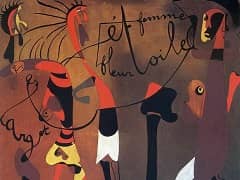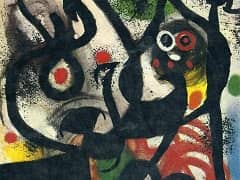Hirondelle Amour, 1933 by Joan Miro
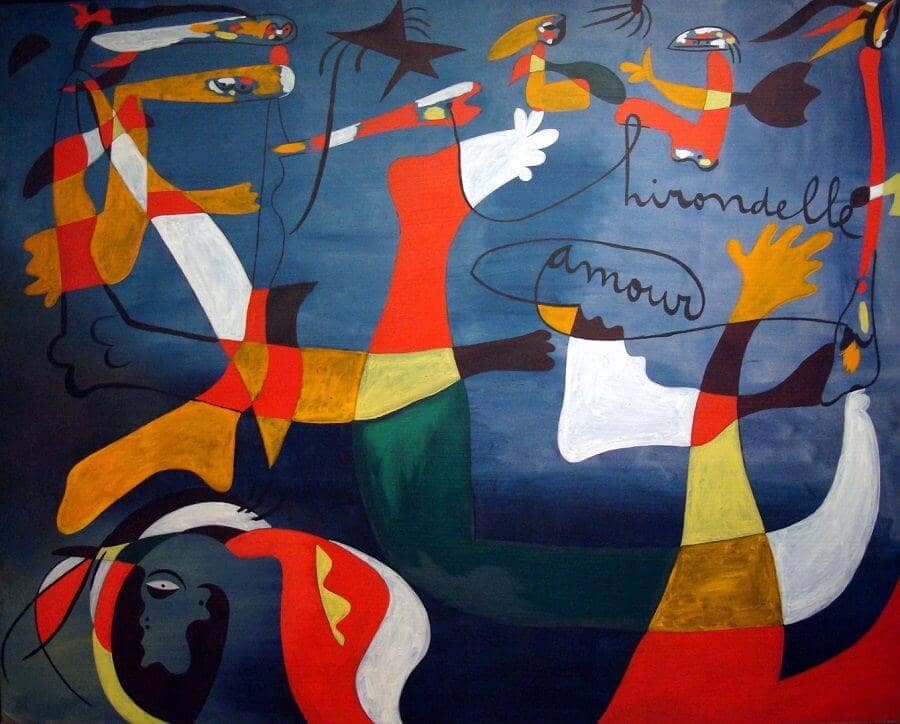
With Hirondelle Amour, 1933, Miro created a wash of lively colors upon his canvas, out of which emerged forms and lines, suggesting the origins of both human thought and the universe.
Conducting his own Surrealism-inspired exploration, Miro invented a new kind of pictorial space in which carefully rendered objects issuing strictly from the artist's imagination are juxtaposed with
basic, recognizable forms. The presence of amorphous shapes, floating in an undefined space, characterize much of Miro works in 1930s.
Joan Miro was never closely aligned with any movement and was too retiring in his manner to be the object of a personality cult, like his compatriot Pablo Picasso,
but the formal and technical innovations that he sustained over a very long career guaranteed his influence on 20th-century art.
Miro's oft-quoted interest in the assassination of painting is derived from a dislike of bourgeois art, which he believed was used as a way to promote propaganda and cultural identity among the
wealthy. Specifically, Miro responded to Cubism in this way, which by the time of his quote had become an established art form in France. He is quoted as saying "I will break their guitar," referring
to Picasso's paintings, with the intent to attack the popularity and appropriation of Picasso's art by politics.

